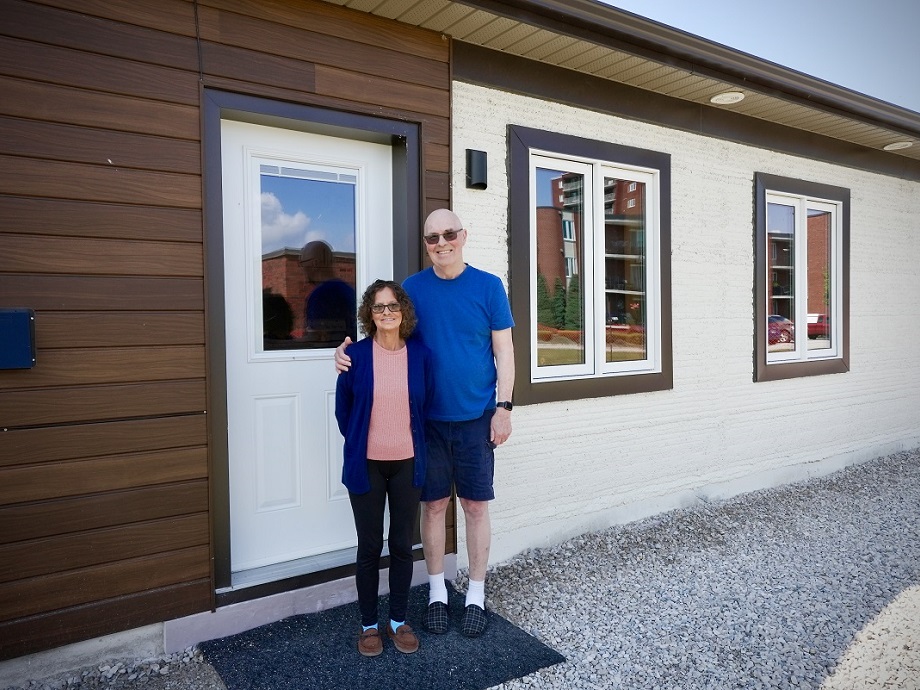Canada’s first 3D printed multi-unit homes - Part 2 of 3
April 26, 2024

AT A GLANCE
- The Town of Leamington, Ontario becomes the site for Canada’s first 3D printed multi-unit residential homes.
- The Bridge Youth Resource Centre provides land to build four 3D homes, and kickstarts their own long-term housing plan.
- Nidus3D starts construction on their first residential home project.
- University of Windsor provides innovative solutions, technical knowledge, project management, and conducts real time testing of construction materials during the build.
The Town of Leamington is located on the northern shores of Lake Erie, the southernmost part of Canada. Fondly known as the “Tomato Capital of Canada,” Leamington offered Canada’s first multi-unit 3D home project team more than a warm climate and longer building season.
“I knew that they had enough infrastructure to support the effort needed to come together to make this development happen,” says Fiona Coughlin, project lead of Canada’s first 3D printed residential homes, and chief executive officer, Habitat for Humanity Windsor-Essex. “I also knew there was likely some land available.”
“I was thrilled that Habitat for Humanity wanted to build within our community again,” says Mayor Hilda MacDonald, Town of Leamington. “We have had great success with the other homes built by Habitat and we have a wonderful working relationship with Fiona and her team.”
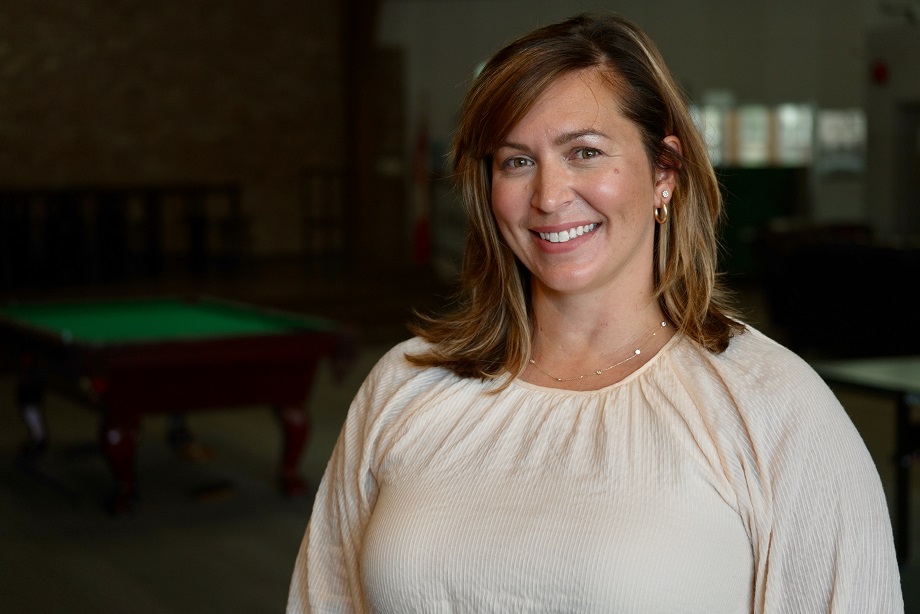
The project also provided an opportunity to help address the town’s need for affordable housing.
“The average household income in Leamington is the lowest in the region and the need for assistance and a leg up is there,” says Hilda.
When Fiona explained what she was wanting to do and her timeline, Hilda connected her with The Bridge Youth Resource Centre.
“I knew they were in the early stages of a planned development on their property that had services already in place. Having that infrastructure would save a lot of time.”
She also knew that the organizations had a shared goal, to help people who were experiencing housing instability. “To me they were a natural fit,” says Hilda. “So, I made an e-introduction.”
A bridge to affordable housing
The Bridge Youth Resource Centre provides resources and wraparound services to help Leamington-area youth reach their goals. This includes mental health and addiction supports, job and education assistance, and helping youth to connect with their community.
“There is such a lack of housing availability to the youth that we serve,” says executive director Krista Rempel. “And we want to make sure that they have a safe place to go.”
In January 2020, The Bridge took the first step toward a long-term housing strategy. They opened the Quiring Family Fresh Start Housing facility, providing temporary housing to youth aged 16-24.
A little over one year later, Krista received Hilda’s email about the 3D homes project.
“Fiona had a very quick timeline and we wanted to make sure that we did everything we could to make it happen.” A key step in demonstrating the applicability of innovative builds, says Fiona, is occupancy.
“Otherwise, it’s just an experiment.”
The Bridge Youth Resource Centre timeline
-
2018
Opened the doors to a permanent facility in Leamington, to better serve youth in need.
-
2020
Opened the Quiring Family housing facility. A 24/7 service for youth aged 16 to 24 who are experiencing homelessness or housing instability.
-
2021
Became homeowners and landlords of Canada’s first 3D printed multi-unit residential homes.
Fiona and her team met with representatives from every municipal department that might be involved in the project.
“Everybody understood that this wasn’t going to be easy,” she says.
“From pre-planning to onsite inspections, our building department worked hand in hand with the 3D team,” says Hilda.
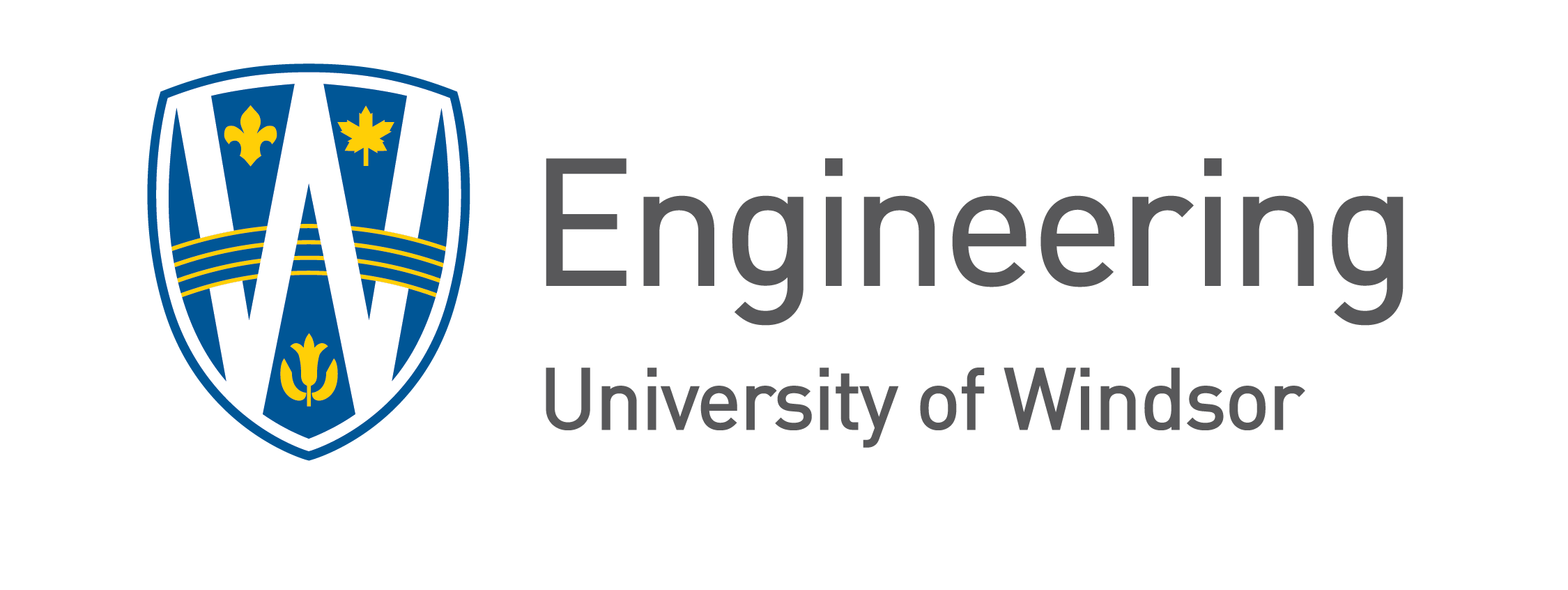
Superstars
![]()
Marcos Silveira
Doctoral student
Marcos helped to secure 3D print firm, and assisted the structural engineer with project designs. He also developed permit-ready 3D print files and was hired by Nidus3D as Head of Engineering.
![]()
Bruno Paini
Doctoral student
Bruno was Project Manager and managed construction activities. He was also hired by Habitat for Humanity Windsor-Essex.
![]()
Juliana Wagner
Master’s student
Juliana collected 3D printed samples and conducted quality control tests. She was also hired by Nidus3D.
Similar but different
“Traditionally, we work with one family,” says Fiona.
The 3D build required Habitat to re-define the word and classify The Bridge as their family.
“We were building with them, and we worked with their donated time on the project.
It was similar to a Habitat project, but unique in every way. It was very analogous to the house itself.”
Build, test, repeat
As the printers rolled in, Ian Arthur, founder, Nidus3D construction printing, was grateful for The Bridge’s large building site.
“The equipment is very, very big and just moving it off the trucks and having enough room to place it somewhere prior to assembly is really important.”
We tried to push the limits of what we could do with the technology.
The site design was a little over 2 and a half times the size of the printer so Ian had to create 2 printer positions.
With a thickened slab foundation already in place, Ian and the team set the printer up, and calibrated it to the shape and size of the foundation pad.
From the tech side, one of the most challenging aspects of 3D construction printing is getting the concrete mix right.
“You’re always trying to put in the exact right amount of chemicals, so you are hardening the concrete about 2 layers below where you are printing because you want really good adhesion.”
For this, Ian was very thankful for the collaboration with the University of Windsor, which helped them to achieve the best possible result.

The University of Windsor’s Faculty of Engineering is a leader in cutting-edge engineering technology and innovative, affordable and environmentally-sustainable housing solutions.
The Department of Civil and Environmental Engineering was therefore keen to advance their own 3D printing knowledge and research with some real-time testing.
The team of university researchers included 2 PhD students and one Master’s student and was led by Professor, Civil and Environmental Engineering, Dr. Sreekanta Das.
“Being involved in real-time testing during the construction process was a unique experience,” says Dr. Das. “Especially considering that 3D printing of homes on such a scale had never been done in Canada before. As with any innovative endeavor, we expected a fair amount of trial and error, and this proved to be the case. However, we were fortunate to have patient and dedicated partners who supported us throughout the entire process.”
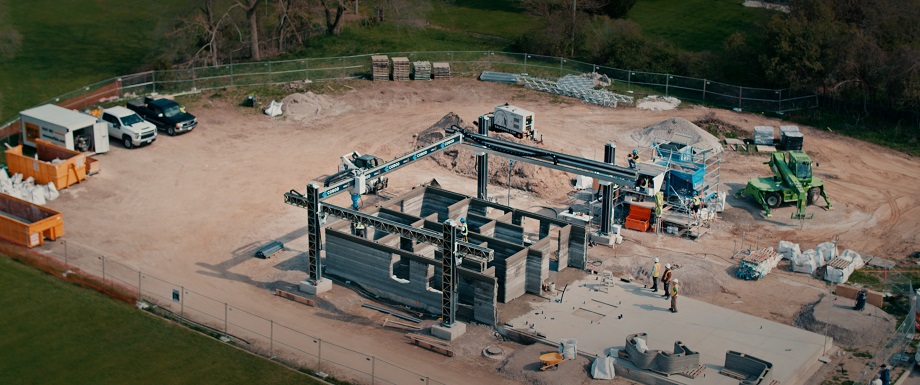
The University of Windsor researchers printed construction samples in identical conditions to the building.
“If it rained or had been a bit drier or warmer, all those realities were reflected in the samples,” says Ian.
They also conducted thermal testing and stress testing.
“They came back and said you could park 90 cars on that house–that’s how much pressure the wall could take,” says Fiona.
“Our continuous research is dedicated to ensuring the strength, durability and weather resistance of the printed structures,” says Dr. Das. “We hope that with the continued construction of more homes using 3D construction printers, the process will become more standardized over time, ultimately reducing the need for extensive testing.”
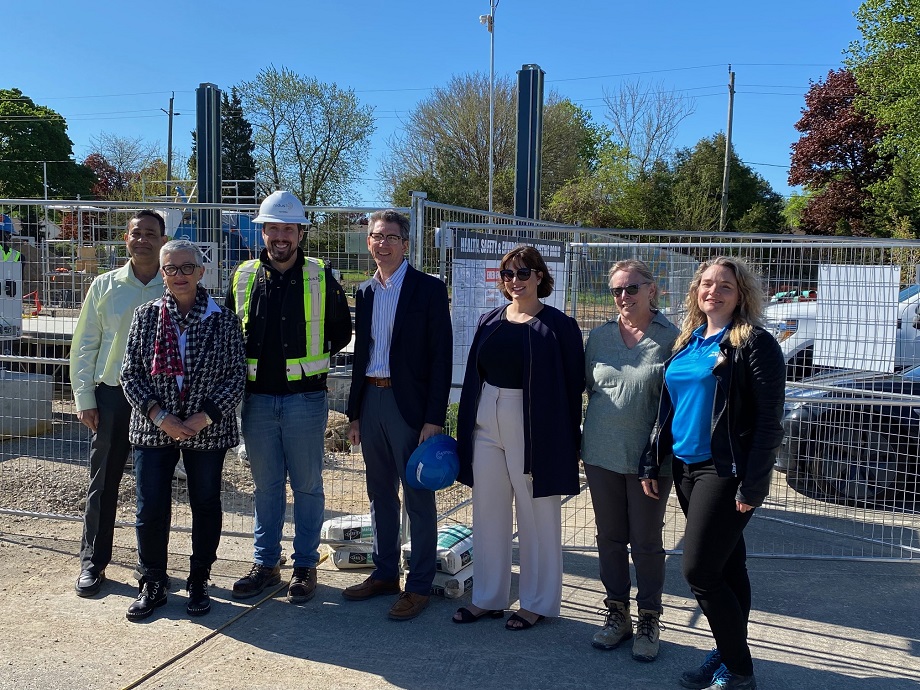
Community support
From volunteers learning how to put adhesive on concrete to suppliers figuring out how to attach kitchen cupboards, innovation ran through every element of the project.
Representatives from the Denmark-based 3D printer manufacturer, Cobod also sent a crew to provide mentorship.
It was really it was the opposite of NIMBY it was YIMBY.
“It was amazing,” says Fiona. “We ended up not only building this house but training the future builders of 3D printing.”
As the building took shape, the wider community cheered on the volunteers and team from behind the safety fence.
“It was really it was the opposite of NIMBY it was YIMBY.”
When the building was complete, The Bridge took on a new role—Canada’s first 3D printed homeowners and landlords.



